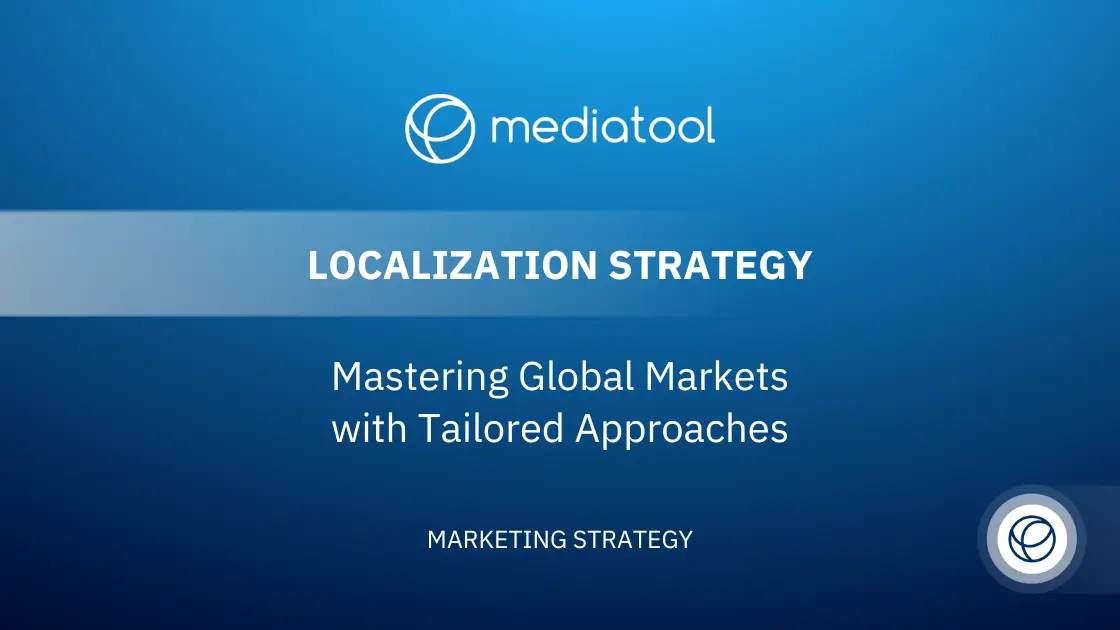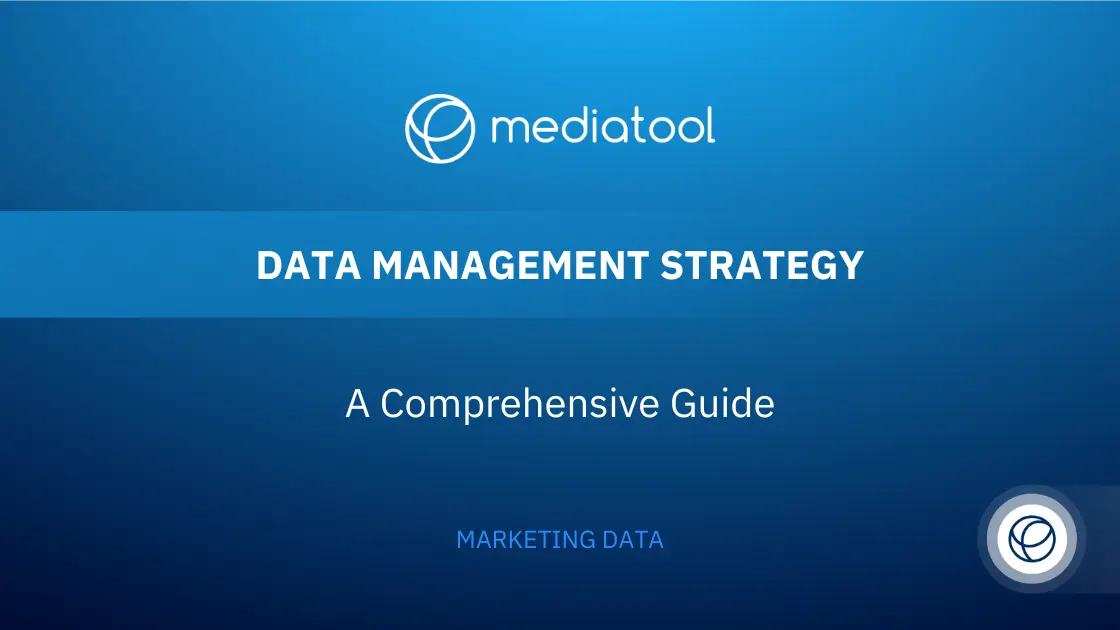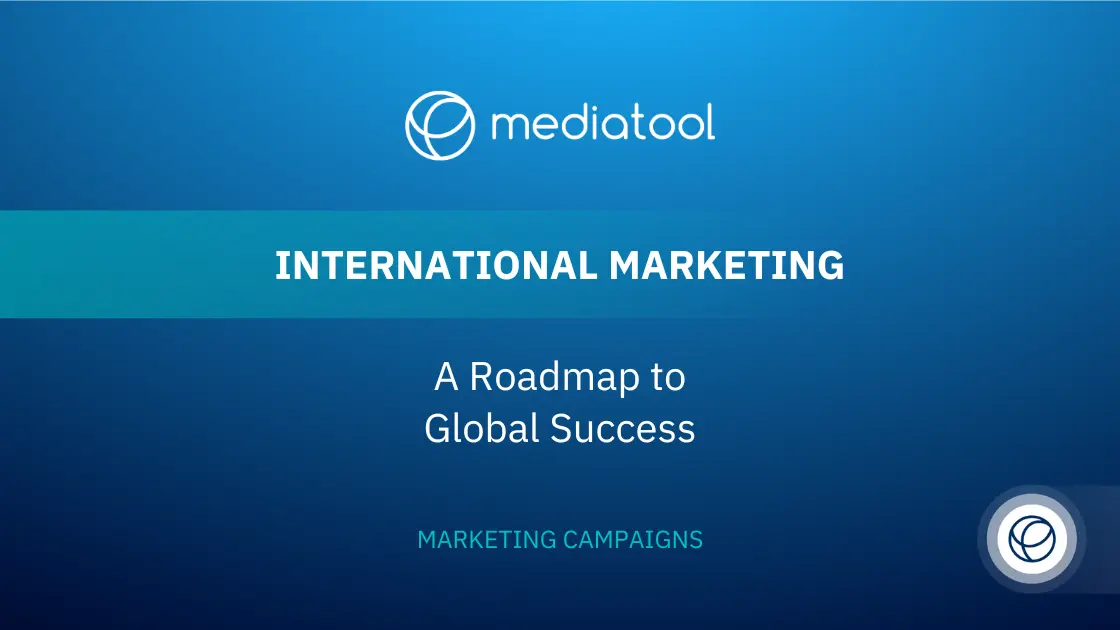Performance marketing has become the umbrella term for a range of online advertising strategies that are making a big impact.
Unless you’ve been hiding under a rock, you’ve doubtless heard the term “performance marketing” being thrown around the web a lot recently. If you want to learn exactly what performance marketing is so you can take advantage of it in your marketing efforts, you’re in the right place.
We’ve put together this guide explaining what performance marketing is, why you’d use it, the most popular types of online advertising, plus handy tips for getting the most out of it.
Let’s get started.
What is Performance Marketing?
Performance marketing is a dynamic approach to digital marketing where advertisers pay marketing companies based on the results achieved, such as a sale, lead, or download. This strategy is gaining traction due to its ability to provide a performance-based ROI through highly targeted marketing efforts.
In this model, advertisers collaborate with affiliate partners and marketing companies, ensuring payment is only for desired outcomes, making it a cost-effective choice for achieving campaign performance goals.
Performance marketing campaigns leverage various channels, including social media platforms, search engine marketing (SEM), and affiliate networks. These campaigns are measurable, transparent, and allow for the tracking of the entire buyer journey, facilitating the fine-tuning of strategies for better results.
Key aspects of performance marketing include search engine optimization (SEO), social media marketing, native advertising, and content marketing. By focusing on these areas, marketers can effectively reach their target audiences, boost brand awareness, and optimize their digital marketing strategy.
Performance marketing also encompasses various types of advertising, such as sponsored content, banner ads, and native ads, all geared towards engaging the relevant audience. The use of key performance indicators (KPIs) and key metrics allows for the tracking and measuring of success, making performance marketing a unique and valuable approach in today’s digital landscape.
Is Affiliate Marketing the Same as Performance Marketing?
While affiliate marketing is a key component of performance marketing, they are not identical concepts. Affiliate marketing is a specific model within the broader scope of performance marketing, where advertisers pay affiliate partners based on the performance of their advertising campaigns, typically through actions like sales or leads.
Performance marketing, on the other hand, encompasses a wider range of strategies and channels, including but not limited to affiliate marketing. It involves various performance-based advertising models and channels, such as cost per acquisition (CPA), digital advertising campaigns, and brand marketing.
Performance marketing is about measuring success and optimizing strategies based on concrete results, which affiliate marketing contributes to as one of the many effective channels under the performance marketing umbrella.
Essentially, while all affiliate marketing is performance marketing, not all performance marketing is affiliate marketing.
What are the Benefits of Performance Marketing?
Performance marketing has revolutionized the way businesses approach online marketing, offering a myriad of benefits that make it an indispensable part of a comprehensive digital marketing strategy. Here’s why performance marketing should be a cornerstone of your marketing efforts:
1. Cost-Effectiveness:
Unlike traditional advertising models, performance marketing ensures that advertisers pay marketing companies only for measurable and successful outcomes, such as clicks, conversions, or sales. This approach maximizes the return on ad spend (ROAS) and minimizes financial risks.
2. Measurable and Trackable:
With the advent of advanced digital tools, performance marketing allows for real-time tracking and measurement of key performance indicators (KPIs). This provides invaluable insights into campaign performance, enabling marketers to optimize their strategies and improve overall effectiveness.
3. Highly Targeted Reach:
Performance marketing campaigns are designed to target specific audiences on various channels, including social media platforms, search engines, and affiliate networks. This ensures that marketing efforts are focused on the relevant audience, boosting the chances of conversion.
4. Flexibility and Scalability:
The digital nature of performance marketing provides immense flexibility. Marketers can adjust their campaigns in response to performance metrics, market trends, or changes in the target audience’s behavior. This adaptability is key to staying relevant and effective in a rapidly evolving digital landscape.
5. Diverse Marketing Channels:
Performance marketing strategies leverage a range of channels, from affiliate marketing and social media advertising to search marketing and content marketing. This diversity allows businesses to reach their audience through multiple touchpoints, enhancing brand visibility and recall.
6. Boosted Brand Awareness and Engagement:
By strategically placing paid ads, sponsored content, and native advertising across various platforms, performance marketing helps boost brand awareness. Engaging content tailored to the interests and needs of the target audience fosters deeper engagement.
7. Enhanced Customer Acquisition and Retention:
Through personalized and targeted campaigns, performance marketing effectively attracts new customers. The use of data-driven insights also aids in developing strategies for customer retention, enhancing the customer lifetime value (CLTV).
8. Alignment with Business Goals:
Performance marketing aligns closely with broader business and marketing goals, whether it’s driving sales, generating leads, or increasing brand awareness. This alignment ensures that every marketing activity contributes to the overarching objectives of the company.
9. Innovation and Creativity:
The performance marketing landscape encourages marketers to continuously innovate and experiment with new strategies, platforms, and creative approaches. This constant evolution drives the industry forward, keeping businesses at the forefront of digital marketing trends.
10. Outsourced Program Management and Expertise:
For companies lacking in-house expertise, outsourced program management offers access to specialized knowledge and skills in performance marketing. This can significantly enhance the effectiveness of marketing campaigns.
Performance marketing is not just about driving immediate sales; it’s a strategic approach that combines efficiency, measurability, and adaptability to ensure long-term marketing success. By integrating performance marketing into your digital marketing strategy, you can achieve a more targeted, results-driven approach that resonates with your audience and drives business growth.
The Most Popular Types of Performance Marketing
In digital marketing, several areas fall inside “digital performance marketing” and each of them is slightly different, meaning performance marketing is not the same in every place you find it.
Where one brand chooses to use just one or two areas, another will use several areas in a complex campaign with many moving parts to meet their marketing goals.
Here are the most popular performance marketing channels you need to know about:
Affiliate Marketing
Affiliate marketing is any form of marketing where the brand is affiliated with the advertiser and pays for desired actions such as click-throughs, leads, or sales. It’s a win-win for both parties with marketers only paying for results and affiliates using highly targeted methods to run effective campaigns.
The most common payment methods for affiliate marketing are pay per click (PPC), pay per lead (PPL), and pay per sale (PPS).
An example of affiliate marketing is Amazon’s affiliate program. Many bloggers and influencers are registered as Amazon affiliates. When they recommend an Amazon product on their website or social media channels and include a link, they receive a small commission (and the buyer isn’t charged any extra).
Native Advertising
Native advertising is a type of paid media that matches the form and function of the site where they’re used, such as news or social media. Unlike display and banner ads, native ads don’t look like typical ads. Instead, they follow the look and feel of the site they’re placed on.
Native ads can be dynamically fed to users based on viewing behavior, for example as recommended reading. Many online media platforms and publications offer native advertising in the form of articles, infographics, and videos that align with the tone and editorial style of the site they’re placed on, such as Buzzfeed Partners and The Guardian Labs.
Sponsored Content
Sponsored content is most often used by influencers when they promote a brand in return for compensation. It usually involves placing a dedicated article or social post promoting a product or service.
If an influencer can prove they have a dedicated following that matches a brand’s target audience, a marketer can use the influencer’s popularity to their advantage by reaching highly engaged potential customers. For instance, there are a wealth of YouTube influencers offering sponsored placements to brands that their loyal followers will find attractive.
Social Media Marketing
One of the most popular types of online advertising, social media marketing, offers a vast and diverse user base for targeting your desired audience. In paid social media marketing, companies can reach potential customers by paying to advertise to them based on their social media profiles and demographics. Adverts are shown to the target audience who are likely to engage through likes, shares, and clicks.
Facebook is the most popular social media site for paid social advertising. With an estimated 2.8 billion monthly active users, global corporations right down to local independent sellers run ad campaigns on the sites to reach their potential customers.
Search Engine Marketing
Search engine marketing (SEM) is another powerful tool for reaching target audiences. SEM uses keywords to target users by placing relevant ads within search results. Marketers pay the advertiser per click-through to their landing page (PPC).
Marketers using Google Ads to display their ads on its search engine results pages (SERPs) are taking advantage of the platform’s immense reach, with 40,000 search queries handled every second and an estimated 1.2 trillion searches every year.
Referral Marketing
When customers make recommendations through word-of-mouth in exchange for compensation—such as discounts or free products—it’s referral marketing.
Referral marketing is a powerful tool as a brand can use its existing customer base. Whenever you’ve signed up to a new service and received a discount when your friend signed up too, that’s referral marketing!
Top Tips for Making the Most of A Performance Marketing Strategy
Design a Killer Landing Page
A lot of the time, performance marketing is about driving visitors to web pages. A poorly thought-out landing page is often the deciding factor between a conversion and a missed opportunity.
Always test your campaigns before they go live. Make sure all links are working properly and ensure your content, releases, and offers are up-to-date. Track the performance of your landing pages like a hawk and update the under-performers.
Carefully Select Your Traffic Sources
As we mentioned earlier, performance marketing varies by type, so choose affiliate partners carefully for the best chances of success. Use reputable advertisers to display your ads and content so that potential buyers trust you and make positive brand connections.
Constantly Track and Optimize Performance
When you run a performance marketing campaign, you’ll be flooded with data in no time. This data gives you insights into what’s working and what’s not. Attribution, mobile vs. desktop, cost per click (CPC), etc. all provide invaluable data points to optimize your campaign and reach your goals.
Measuring performance is a whole other kettle of fish, which is why we’ve put together this handy guide with everything you need to know to effectively track your performance marketing campaign.
Keep Reviewing, Optimizing, and Repeating to Reach your Goal
Whether you’re a performance marketing guru or just starting out, there’s always space to review your campaign, optimize it, and find a more effective way to reach your goal.
When you’re ready to begin your campaign, or if your campaign’s already underway, take a moment to check out Mediatool’s integrations. We have powerful data integration features to hook you up—including Google, Facebook, Instagram, and LinkedIn—and easily track and analyze your campaign, plus a ton of other really helpful features all in one easy-to-use platform.
How to Measure Performance Marketing Results
Getting dragged into conversations that question or challenge the impact of your marketing strategy is nothing new for digital marketers. We’ve all been there, done that. But when black swan disruptions, such as Covid-19 pandemic, wreak havoc on traditional marketing channels (looking at you, event marketing), the stakes to get performance marketing right reach new heights. No pressure!
Setting the right KPIs and tracking the right metrics can help you demonstrate marketing’s impact on a company’s financial performance. And replace gut-driven marketing conversations with meaningful, data-informed decisions. Wouldn’t that be nice, eh?
Hold tight. Here’s everything you need to know about measuring performance marketing results in unpredictable times.
Vanity vs. Value: Tracking Metrics that Matter
There are tons of marketing metrics you could track. And not knowing which ones really matter is arguably the biggest pitfall marketers fall into.
Vanity metrics are typically defined as metrics that look good on the surface but have little to no substance. It all comes down to one thing: does it tell you what to do next? If you look at a metric and you’re not sure what to make of it or how to use it to make better-informed decisions, that’s a vanity metric. In other words, ditch it.
For instance, gaining 1000 new followers on Twitter may seem impressive, but that number quickly loses its impact if only 10 of those followers go on to convert. Of course, there’s nothing inherently wrong with keeping track of vanity metrics. They can help you determine the success of your messaging, targeting and channel performance. So, as long as you’re using vanity metrics to optimize your content for audience engagement or specific channels (rather than trying to tie the numbers to the ROI), you’re doing it all right.
However, if your goal is to measure marketing’s contribution to revenue, you’ll need to focus on actionable metrics. At their core, actionable metrics aim to answer three key business questions:
- How do you build or lose revenue?
- How do you gain or lose customers?
- What’s driving people to you? (features, benefits, problems)
- Actionable metrics are tracked against SMART KPIs — specific, measurable, achievable, realistic and time-related performance indicators. And we’ve written a practical how-to guide on how to set and measure meaningful marketing KPIs, in case you need a quick refresher.
Now, let’s look at what performance metrics marketers are tracking, and why.
How to Measure Marketing Results With Actionable Metrics
When setting KPIs, start with your business goals. Targets that are not specific enough can lead to businesses missing opportunities and not looking at or capturing the right data. While you might end up tracking multiple metrics (it’s important to keep your finger on the marketing pulse!), only the most important ones should be used as KPIs.
Here are a few common KPIs for marketing and where they might be used:
Conversion rates. Conversion rate measures the percentage of customers who take a specific, desired action. It could be clicking through a paid ad, signing up for a newsletter or starting a free trial. You’ll probably have to track multiple conversions across your marketing funnels, so make sure you align this metric with your goals.
CAC (customer acquisition cost). The CAC is calculated by dividing all the costs spent on trying to acquire new customers by the number of new customers acquired in the period the money was spent. It is often used as a metric to determine marketing effectiveness.
CLTV (customer lifetime value). The CLTV is calculated by multiplying the average purchase value by average purchase frequency, then multiplying the result by the average amount of time a customer stays with your brand. Knowing your CLTV will help you determine how much you can spend on customer acquisition.
Your Performance Marketing Tracking Toolkit
Now, more than ever, businesses need to understand which marketing efforts are moving the needle. This means keeping a close eye on real-time results and adjusting budgets and tactics accordingly. Of course, that’s easier said than done — tracking multiple campaigns in real time can be incredibly complex.
To navigate more confidently and keep the campaigns on track, marketers have to reexamine their marketing tech stack and start plugging the gaps.
There are a couple of media planning and tracking tools that can help you hit your targets without losing your mind in the process.
Google Analytics. It would be difficult to find a marketer who’s not aware of Google’s web analytics product. In fact, mastering Google Analytics may be one of the most important skills for a modern marketer. When leveraged correctly, Google Analytics is a powerful tool for tracking, comparing and reporting on marketing campaigns. Yet, with so much data available at a click, it can often come across as too complex or technical. To reap more value from your GA setup, try implementing these practices:
- Create micro and macro goals to track conversions on your site
- Add annotations to provide more context around key events or changes
- Set up proper campaign tracking with tagged links
- Set up Intelligence Event Notifications to get notified about unusual site activity
- Mediatool. As a cloud-based campaign management and optimisation tool, Mediatool provides marketers with a holistic view of all campaign metrics in real time, in one place. Plus, with Mediatool’s collaboration features, teams can report against KPIs, share ideas and act on data insights to run more impactful campaigns.
Book a live demo of Mediatool to see how you can leverage the agile marketing planning calendar and reporting and collaboration tools all in one platform. Bulletproof your campaigns while saving time and effort.




